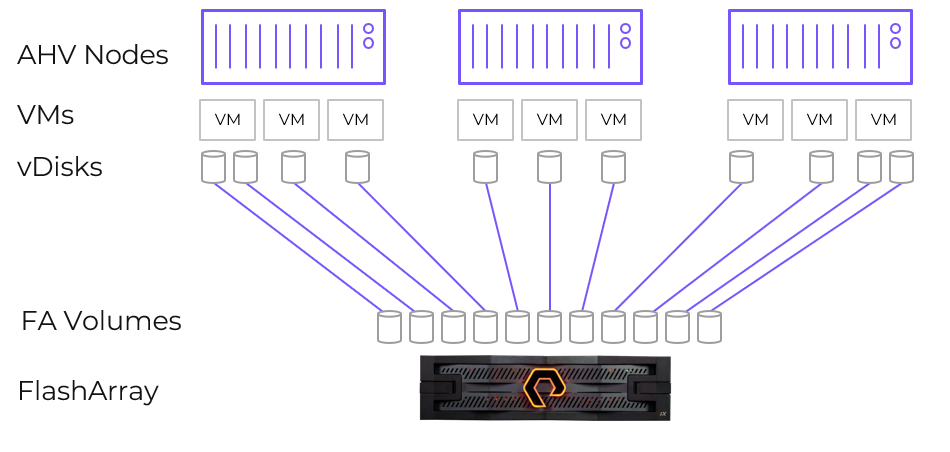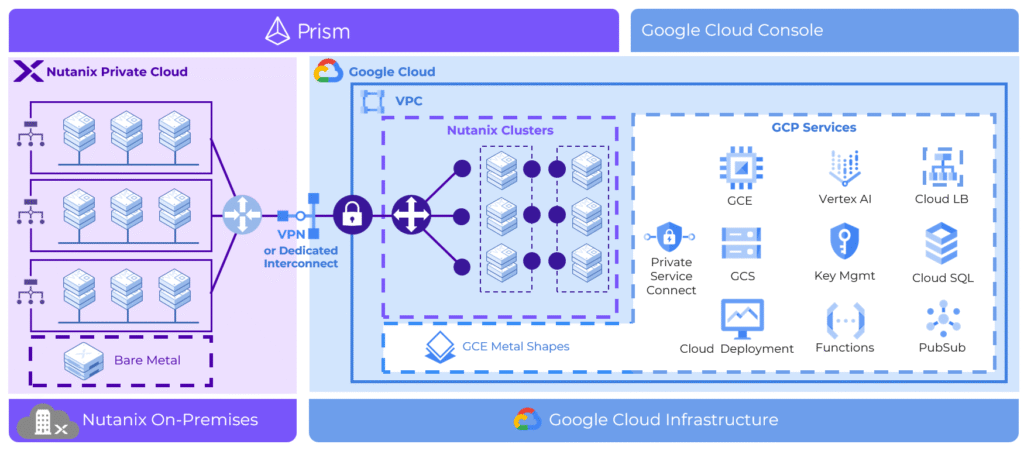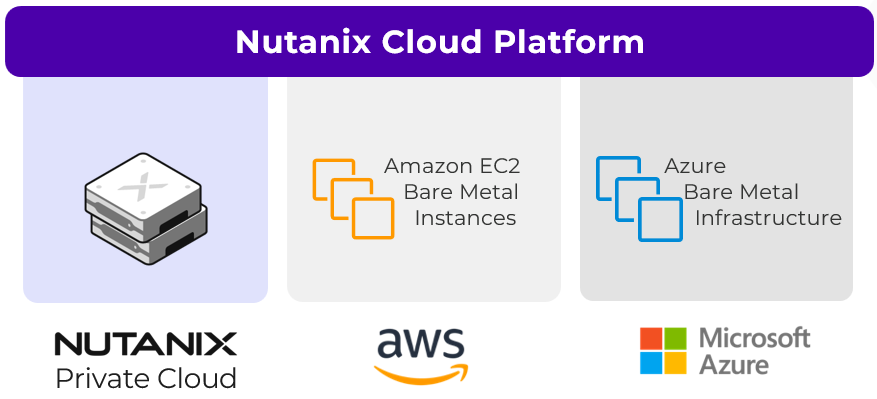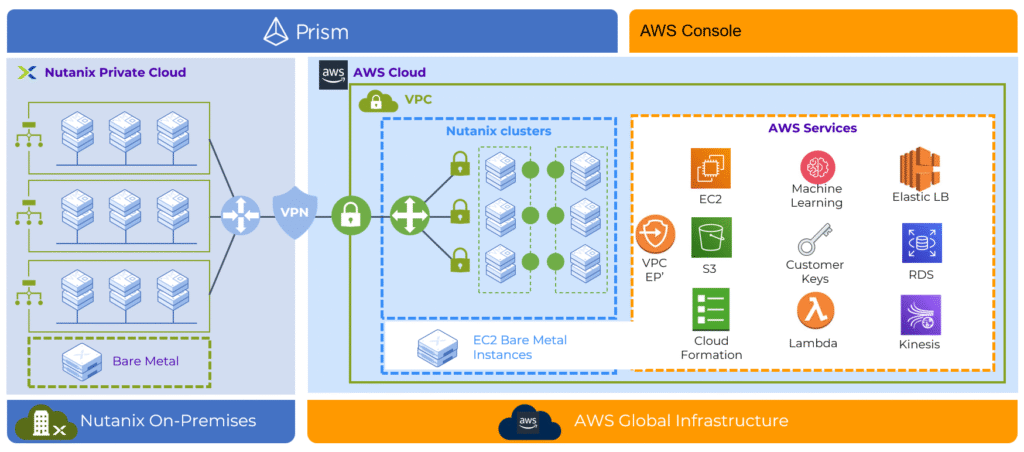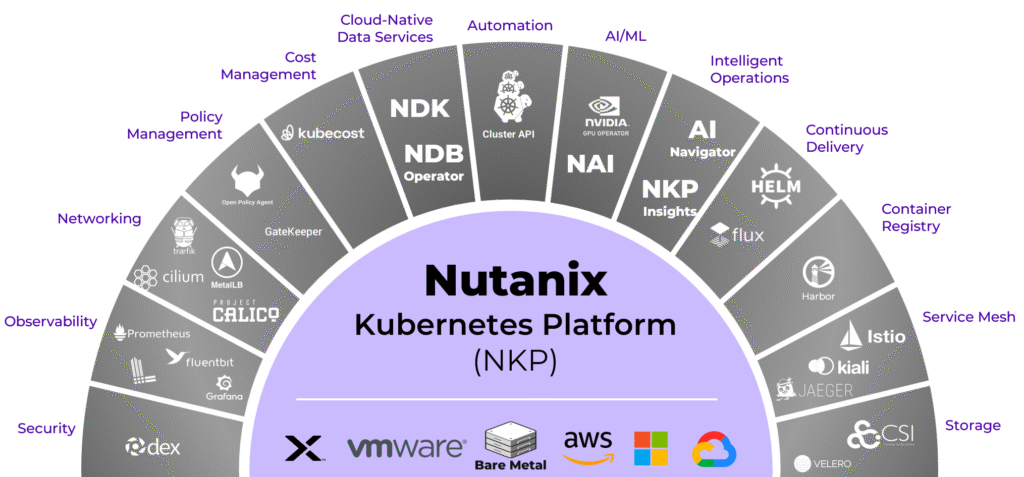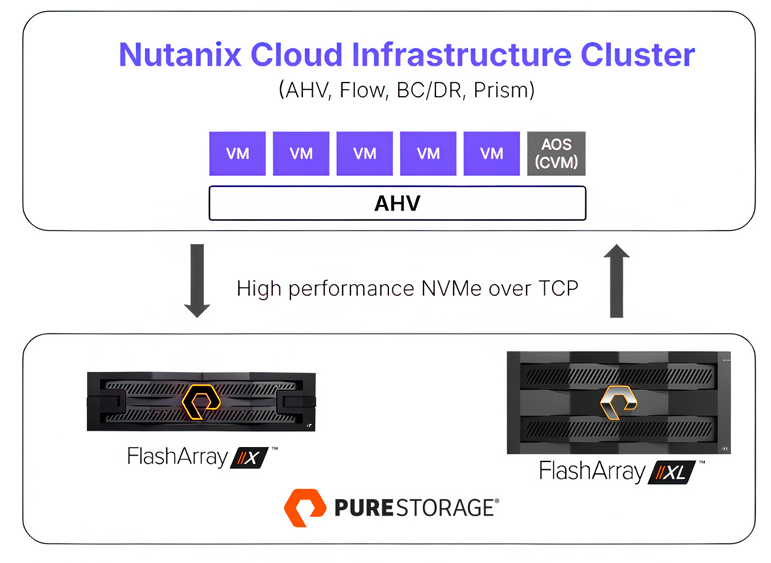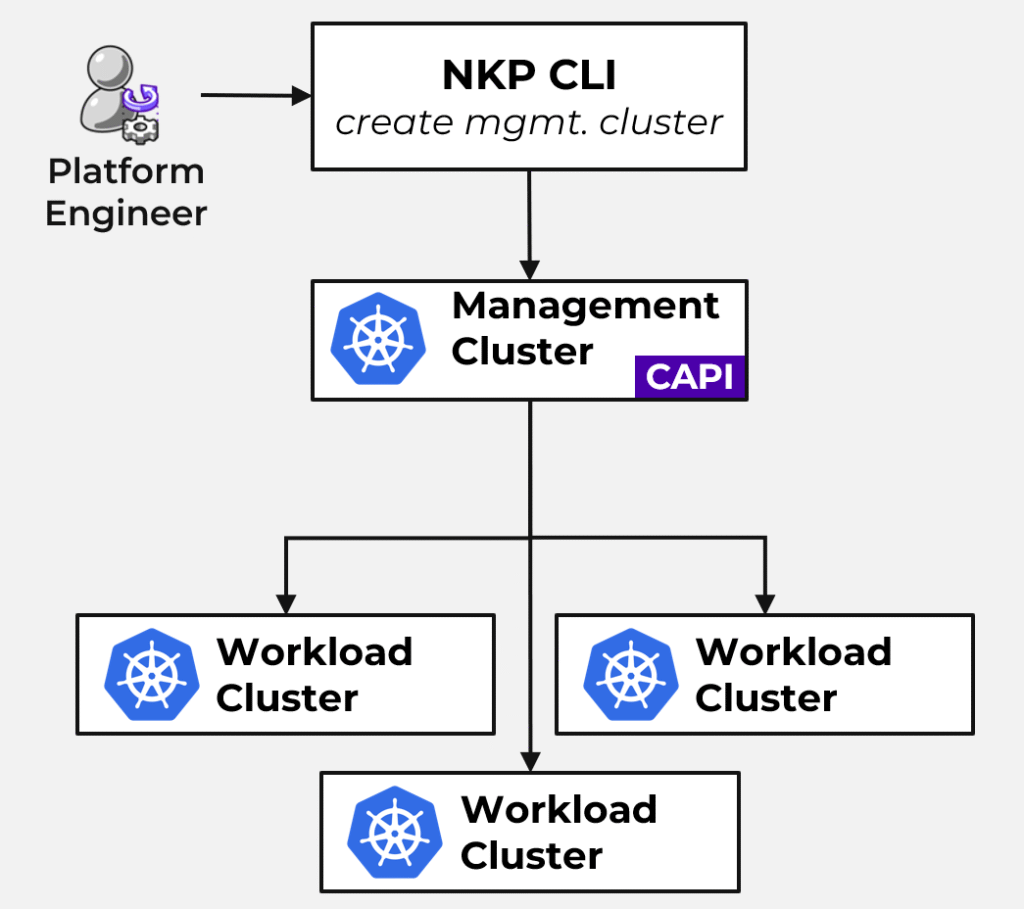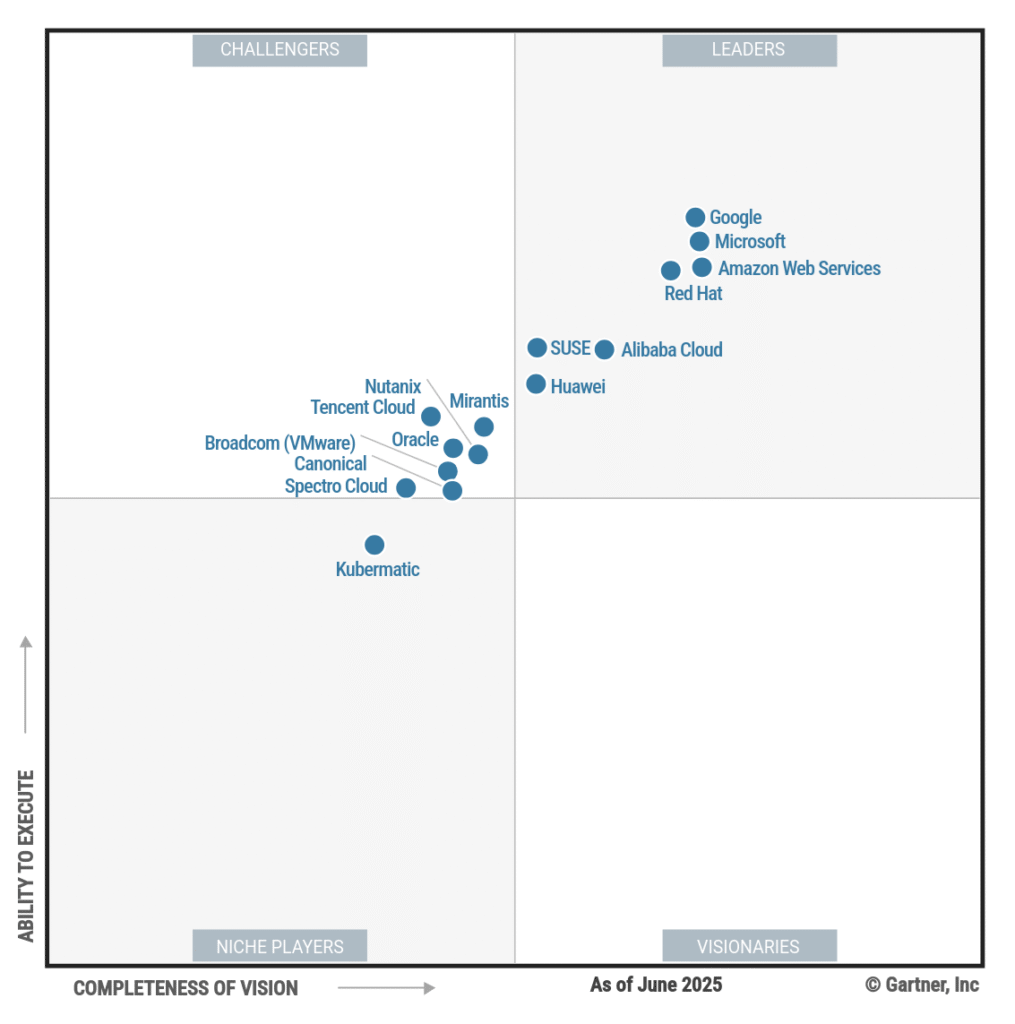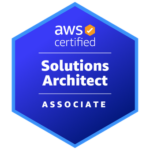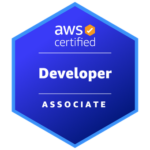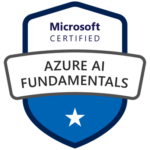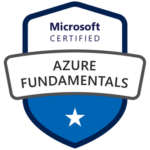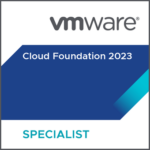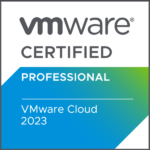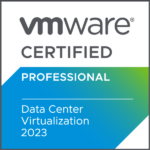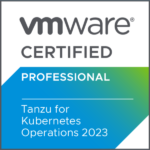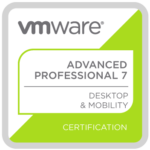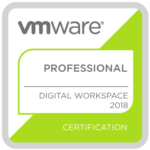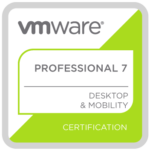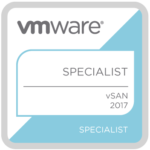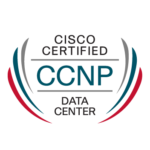
Nutanix should not be viewed primarily as a replacement for VMware
Public sector organizations rarely change infrastructure platforms lightly. Stability, continuity, and operational predictability matter more than shiny and modern solutions. Virtual machines became the dominant abstraction because they allowed institutions to standardize operations, separate applications from hardware, and professionalize IT operations over the long term.
For many years, VMware has become synonymous with this VM-centric operating model, as it provided a coherent, mature, and widely adopted implementation of virtualized infrastructure. Choosing VMware was, for a long time, a rational and defensible decision.
Crucially, the platform was modular. Organizations could adopt it incrementally, integrate it with existing tools, and shape their own operating models on top of it. This modularity translated into operational freedom. Institutions retained the ability to decide how far they wanted to go, which components to use, and which parts of their environment should remain under their direct control. These characteristics explain why VMware became the default choice for so many public institutions. It aligned well with the values of stability, proportionality, and long-term accountability.
The strategic question public institutions face today is not whether that decision was wrong. Rather, if they can learn from it. We need to ask ourselves whether the context around that decision has changed and whether continuing along the same platform path still preserves long-term control, optionality, and state capability.
From VM-centric to platform-path dependent
It is important to be precise in terminology. Most public sector IT environments are not VMware-centric by design. They are VM-centric. Virtual machines are the core operational unit, deeply embedded in processes, tooling, skills, and governance models. This distinction is very important. A VM-centric organization can, in principle, operate on different platforms without redefining its entire operating model. A VMware-centric organization, by contrast, has often moved further down a specific architectural path by integrating tightly with proprietary platform services, management layers, and bundled stacks that are difficult to disentangle later.
This is where the strategic divergence begins.
Over time, VMware’s platform has evolved from a modular virtualization layer into an increasingly integrated software-defined data center (SDDC) and VCF-oriented (VMware Cloud Foundation) stack. That evolution is not inherently negative. Integrated platforms can deliver efficiencies and simplified operations, but they also introduce path dependency. Decisions made today shape which options remain viable tomorrow.
So, the decisive factor is not pricing. Prices change. For public institutions, this is a governance issue (not a technical one).
There is a significant difference between organizations that adopted VMware primarily as a hypervisor platform and those that fully embraced the SDDC or VCF vision.
Institutions that did not fully commit to VMware’s integrated SDDC approach often still retain architectural freedom. Their environments are typically characterized by:
- A strong focus on virtual machines rather than tightly coupled platform services
- Limited dependency on proprietary automation, networking, or lifecycle tooling
- Clear separation between infrastructure, operations, and higher-level services
For these organizations, the operational model remains transferable. Skills, processes, and governance structures are not irreversibly bound to a single vendor-defined stack. This has two important consequences.
First, technical lock-in can still be actively managed. The platform does not yet dictate the future architecture. Second, the total cost of change remains realistic. Migration becomes a controlled evolution rather than a disruptive transformation.
In other words, the window for strategic choice is still open.
Why this moment matters for the public sector
Public institutions operate under conditions that differ fundamentally from those of private enterprises. Their mandate is not limited to efficiency, competitiveness, or short-term optimization. Instead, they are entrusted with continuity, legality, and accountability over long time horizons. Infrastructure decisions made today must still be explainable years later, often to different audiences and under very different political circumstances. They must withstand audits, parliamentary inquiries, regulatory reviews, and shifts in leadership without losing their legitimacy.
This requirement fundamentally changes how technology choices must be evaluated. In the public sector, infrastructure is an integral part of the institutional framework that enables the state to function effectively. Decisions are therefore judged not only by their technical benefits and performance, but by their long-term defensibility. A solution that is efficient today but difficult to justify tomorrow represents a latent risk, even if it performs flawlessly in day-to-day operations.
It is within this context that the concept of digital sovereignty has moved from abstraction to obligation. Governments increasingly define digital sovereignty not as isolation or technological nationalism, but as the capacity to maintain control and freedom of an environment. This includes the ability to reassess vendor relationships, adapt sourcing strategies, and respond to geopolitical, legal, or economic shifts without being forced into reactive or crisis-driven decisions.
Digital sovereignty, in this sense, is closely tied to governance and control. It is about ensuring that institutions retain the ability to make informed, deliberate choices over time. That ability depends less on individual technologies and more on the structural properties of the platforms on which those technologies are built. When platforms are designed in ways that limit flexibility, they quietly constrain future options, regardless of their current performance or feature set.
Platform architectures that reduce reversibility are particularly problematic in the public sector. Reversibility does not imply constant change, nor does it require frequent platform switches. It simply means that change remains possible without disproportionate disruption. When an architecture makes it technically or organizationally prohibitive to adjust course, it creates a form of lock-in that extends beyond commercial dependency into the realm of institutional risk.
Even technically advanced platforms can become liabilities if they harden decisions that should remain open. Tight coupling between components, inflexible operational models, or vendor-defined evolution paths may simplify operations in the short term, but they do so at the cost of long-term flexibility. In public institutions, where the ability to adapt is inseparable from democratic accountability and legal responsibility, this trade-off must be examined with particular care.
Ultimately, digital sovereignty in the public sector is about ensuring that those dependencies remain governable. Platforms that preserve reversibility support this goal by allowing institutions to evolve deliberately, rather than react under pressure. Platforms that erode it may function well today, but they quietly accumulate strategic risk that only becomes visible when options have already narrowed.
Seen through this lens, digital sovereignty is a core governance requirement, embedded in the responsibility of public institutions to remain capable, accountable, and in control of their digital future.
Nutanix as a strategic inflection point
This is why Nutanix should not be viewed primarily as a replacement for VMware. Framing it as such immediately steers the discussion in the wrong direction. Replacements imply disruption, sunk costs, and, perhaps most critically in public-sector and enterprise contexts, an implicit critique of past decisions. Infrastructure choices, especially those made years ago, were often rational, well-founded, and appropriate for their time. Suggesting that they now need to be “replaced” risks triggering defensiveness and obscures the real strategic question.
More importantly, the replacement narrative fails to capture what Nutanix actually represents for VM-centric organizations. Nutanix does not demand a wholesale change in operating philosophy. It does not require institutions to abandon virtual machines, rewrite operational playbooks, or dismantle existing governance structures. On the contrary, it deliberately aligns with the VM-centric operating model that many public institutions and enterprises have refined over years of practice.
For this reason, Nutanix is better understood as a strategic inflection point. It marks a moment at which organizations can reassess their platform trajectory without invalidating the past. Virtual machines remain first-class citizens, operational practices remain familiar and roles, responsibilities, and control mechanisms continue to function as before. The day-to-day reality of running infrastructure does not need to change.
What does change is the organization’s strategic posture.
In essence, Nutanix is about restoring the ability to choose. In public-sector (and enterprise environments), that ability is often more valuable than any individual feature or performance metric.
The cost of change versus the cost of waiting
A persistent misconception in infrastructure strategy is the assumption that platform change is, by definition, prohibitively expensive. This belief is understandable. Large-scale IT transformations are often associated with complex migration projects, organizational disruption, and unpredictable outcomes. These associations create a strong incentive to delay any discussion of change for as long as possible.
Yet this intuition is misleading. In practice, the cost of change does not remain constant over time. It increases the longer the architectural lock-in is allowed to deepen.
Platform lock-in rarely occurs as an intentional choice, but it accumulates gradually. Additional services are adopted for convenience, tooling becomes more tightly integrated and operational processes begin to assume the presence of a specific platform. Over time, what was once a flexible foundation hardens into an implicit dependency. At that point, changing direction no longer means replacing a component; it means changing an entire operating model.
Organizations that remain primarily VM-centric and act early are in a very different position. When virtual machines remain the dominant abstraction and higher-level platform services have not yet become deeply embedded, transitions can be managed incrementally. Workloads can be evaluated in stages. Skills can be developed alongside existing operations. Governance and procurement processes can adapt without being forced into emergency decisions.
In these cases, the cost of change is not trivial, but it is proportionate. It reflects the effort required to introduce an alternative (modular) platform, not the effort required to escape a tightly coupled ecosystem.

By contrast, organizations that postpone evaluation until platform constraints become explicit often find themselves facing a very different reality. When licensing changes, product consolidation, or strategic shifts expose the depth of dependency, the room for change has already narrowed. Timelines become compressed, options shrink, and decisions, that should have been strategic, become reactive.
The cost explosion in these situations is rarely caused by the complexity of the alternative platform. It is caused by the accumulated weight of the existing one. Deep integration, bespoke operational tooling, and platform-specific governance models all add friction to any attempt at change. What might have been a manageable transition years earlier becomes a high-risk transformation project.
This leads to a paradox that many institutions only recognize in hindsight. The best time to evaluate change is precisely when there is no immediate pressure to do so. Early evaluation is a way to preserve choice. It allows organizations to understand their true dependencies, test assumptions, and (perhaps) maintain negotiation leverage.
Waiting, by contrast, does not preserve stability. It often preserves only the illusion of stability, while the cost of future change continues to rise in the background.
For public institutions in particular, this distinction is critical. Their mandate demands foresight, not just reaction. Evaluating platform alternatives before change becomes unavoidable means taking over responsibility.
A window that will not stay open forever
Nutanix should not be framed as a rejection of VMware, nor as a corrective to past decisions. It should be understood as an opportunity for VM-centric public institutions to reassess their strategic position while they still have the flexibility to do so.
Organizations that did not fully adopt VMware’s SDDC approach are in a particularly strong position. Their operational models are portable, their technical lock-in is still manageable and their total cost of change remains proportionate.
For them, the question is whether they want to preserve the ability to decide tomorrow.
And in the public sector, preserving that ability is a governance responsibility.


